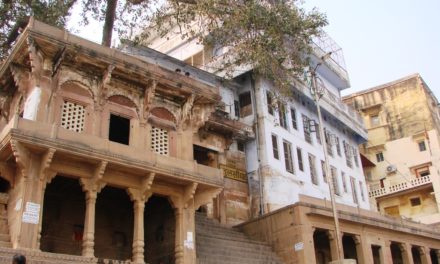
Researchers discover a new species of terrestrial frog in Goa, give it a Konkani name

The Western Ghats of India is home to so many flora and fauna that news of the discovery of new species lurking in these forests is commonplace. In one such collaborative effort, researchers from the Zoological Survey of India, Kolkata, Mhadei Research Centre, Goa, Indian Institute of Science (IISc) and Mount Carmel College, Bengaluru, have discovered a new species of frog. This frog, the researchers say, belongs to the genus Fejervarya and is named Fejervarya goemchi after the historical name of Goa.
The discovery also highlights the ecological diversity in a small state like Goa, as evident in the name given to the new species. “When it comes to amphibian research, Goa was largely unexplored. During the colonial period, Goa was under Portuguese rule who, unlike Britishers, did not attempt to explore the amphibian diversity”, remarks Dr. K. P. Dinesh in an interview to Research Matters. He is a scientist at the Zoological Survey of India and an author of the current study.
The study was published in the journal Records of the Zoological Survey of India and was funded by the Critical Ecosystem Partnership Fund (Western Ghats) and the Ministry of Environment, Forests and Climate Change (MoEFCC).
The newly discovered reddish-brown coloured frog is about 4.1-4.6 cm long, and like most frogs, its breeding season begins around June with the onset of the monsoon and lasts until September. The researchers say that since its physical characteristics are very similar to other members of the genus, it is hard to identify based on external features alone. This has led to confusion in the classification of many species in the genus Fejervarya and is becoming increasingly common for many amphibians in India.
The other impediments in the classification of newly found species are missing specimens and vague locality information, say the researchers. “Adding to this, some of the species are endemic to small regions, and many are distributed across a wide geographic range. There is no clear information on the range of distribution yet”, points out Dr. Dinesh. Such confusion can hinder research and conservation efforts. In this study, the researchers have used a combination of the physical characteristics of the frog, its geographic distribution range and DNA analysis to confirm the new species.
Members of the genus Fejervarya or ‘fejervaryan frogs’ have a wide range of distribution and are known to be distributed across South Asia and Southeast Asia. So far, the researchers have found the presence of this new frog species in parts of Goa. “In Goa, this species shares its habitat with two other species of the genus Fejervarya and can be easily distinguished from the others based on its size and other morphological characters”, says Dr. Dinesh.
The researchers found that this species is genetically closely related to Fejervarya kudremukhensis, a species of frog found in the Kudremukh hill ranges of the central Western Ghats. “We need further studies to understand the range of distribution for both the species and their evolutionary history of isolation of ranges”, he adds.
Another remarkable aspect of this discovery is that it was a part of the ‘Open Taxonomy Initiative’, supported by the Evolutionary Ecology Lab of Dr. Kartik Shanker at the Centre for Ecological Sciences (CES), IISc, Bangalore. It aims to provide a platform where early career researchers can learn about taxonomy and be a part of the discovery and description of new species. With rapid climate change and habitat loss, species are going extinct even before they can be described. Discovery of new species is essential for their conservation and to avoid nameless extinctions.
“Taxonomy in India is a dying field. There are some taxa in which species discovery has become highly competitive, with few collaborations. This initiative, that Dr. SP Vijayakumar and I have been working on, provides opportunities for other taxonomists to work with these species, and for young researchers to learn about taxonomy and describe species”, says Dr. Kartik Shanker, Director, Ashoka Trust for Research in Ecology and the Environment (ATREE), talking about the Open Taxonomy Initiative.
Source : https://researchmatters.in/news/researchers-discover-new-species-terrestrial-frog-goa-give-it-konkani-name




































